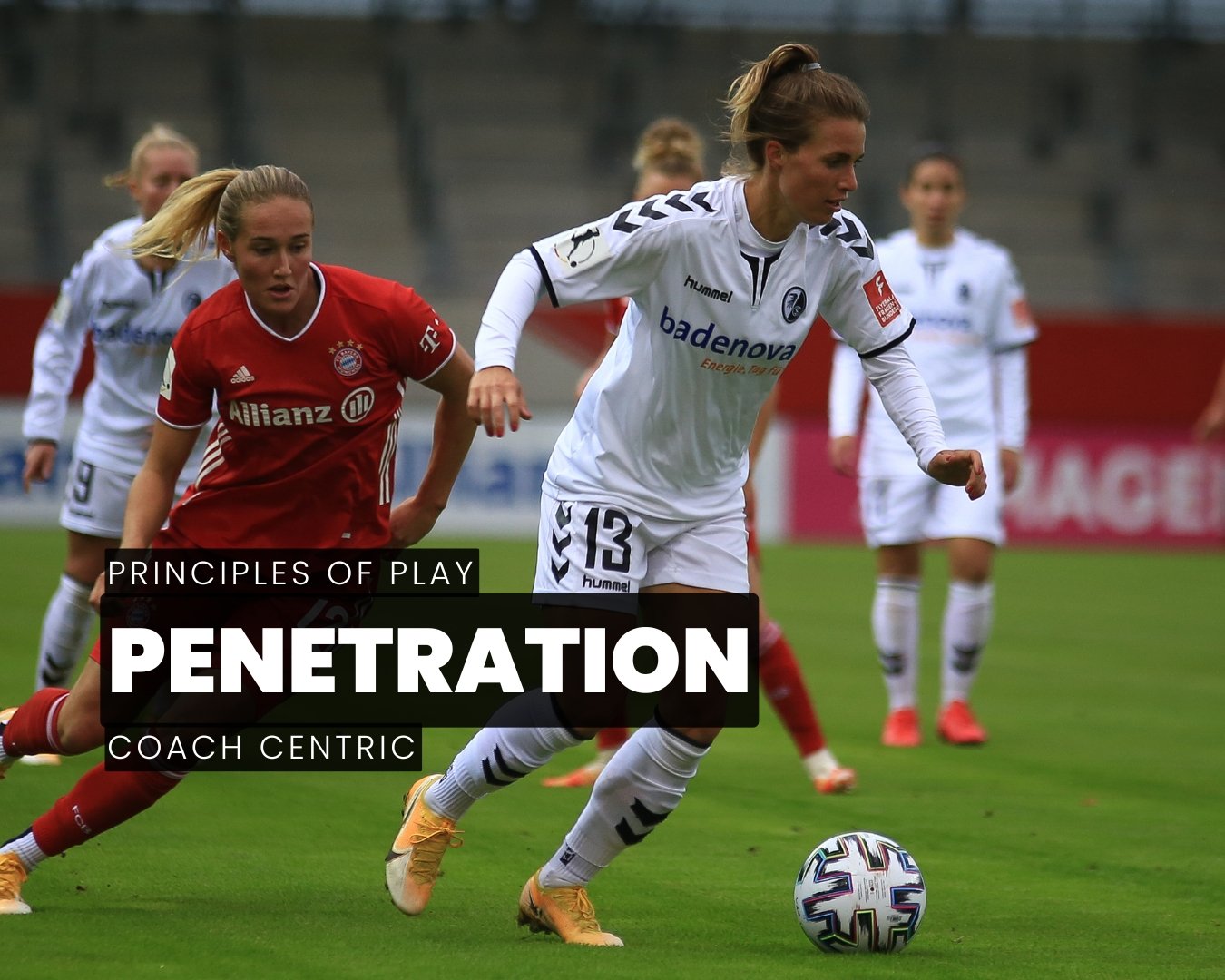Coach Centric: Elevating Understanding Through Insight
Coach Centric is your go-to resource for simplifying the complexities of soccer. Designed for coaches, players, and parents alike, this section offers concise, practical insights to help everyone understand the game better. By breaking down key concepts like moments of the game, coaching approaches, and player development, we bridge the gap between theory and practice. Whether you’re on the field, in the stands, or simply curious about the game, Coach Centric inspires deeper connections and smarter decision-making.

Decision-Making in Wide Areas: The Art, the System, and the Players Who Defined It
There was a time when the crowd would rise as soon as a winger received the ball in space. Shoulders would drop, fullbacks would backpedal, and there was an electricity to the unknown — the possibility of a cross whipped in, a byline cutback, or a dazzling solo run. Wingers were artists. Instinctive. Expressive. Sometimes chaotic.

What Role Does Width Play in Unlocking Defenses?
If penetration is about breaking through, width is about pulling apart. It's about stretching the opposition to create space in central areas, opening lanes for passes, runs, and ultimately, decision-making.
So why shift the focus to width now? Because in the modern game, defenders are becoming more compact and central blocks harder to break. With so much attention on playing through the lines, there’s growing tactical value in how a team stretches the field. Wingers who hug the touchline, fullbacks who overlap, or midfielders who drift wide—all of these movements force defenders to cover more ground, and when done right, they create the conditions for central penetration to flourish.
Just like with penetration, width isn’t just about positioning—it’s about timing, recognition, and execution.

Developing the Technical Foundations for Building Out from the Defensive Third
Are we developing players with the technical attributes required to execute our tactical principles, or are we simply adopting a style because it's the current trend?
Many teams aspire to "build out from the back," but what does that actually mean? The phrase can take on different meanings depending on the coach, the system, and the players available. Are we aiming to progress methodically, or are we emphasizing security in the defensive third before quickly transitioning to attack?
No matter the interpretation, the success of any build-up approach hinges on the technical and cognitive qualities of the players involved.

Finding the Balance: Quick Vertical Progression vs. Controlled Possession
In the ongoing debate about playing out from the back, one fundamental question remains: Should teams prioritize quick vertical progression to break lines and advance rapidly, or should they emphasize controlled possession to manipulate space and dictate the tempo?

What Principles Guide Your Team When “Playing Out from the Back”?
“Playing out from the back” is a hot topic in modern soccer. Pundits and analysts frequently debate why coaches insist on this style, often pointing to Pep Guardiola as the primary influence. While some criticize it as overly risky, there are valid reasons why this approach can be highly effective.

Penetration: Exploring Variations
Penetration, as a key attacking principle, can take many forms—whether through direct passing, dynamic dribbling, or intelligent movement off the ball. How it is applied depends on a team’s style, the area of the field, and the opposition’s approach

Coaching Attacking Principles: A Framework for Adaptive Play
Attacking principles of play are crucial for any team looking to dominate possession, create goal-scoring opportunities, and break down defensive structures effectively. However, how these principles are prioritized depends on the team’s style, the players’ abilities, and the level of play. This article will introduce core attacking principles and demonstrate how different approaches impact training, player development, and in-game execution.

How Principles of Play Shape Your Coaching Approach
Coaching is as much about understanding the game as it is about shaping players to reach their full potential. At the heart of every coaching philosophy lies the concept of principles of play — the foundational beliefs that guide how a team approaches the game.

Why Principles of Play Are Key to Coaching Success
The core principles of play form the foundation of a team's tactical approach and provide clarity in both attacking and defending situations. These principles help guide players' decision-making, create structure in training sessions, and ultimately lead to effective, purposeful play.

The Art of Set-Pieces: Breaking Down Attacking and Defending Strategies
Set-pieces are one of soccer’s great equalizers. Whether it’s a free kick, corner, throw-in, or even a kick-off, these moments often determine the outcome of matches at every level of the game. But set-pieces aren’t just about lumping the ball into the box—there’s nuance, strategy, and preparation that separate success from failure.

Transition to Defend: Reacting, Recovering, and Reshaping
The transition to defend is a pivotal moment in soccer, demanding immediate reaction, recovery, and coordination. When possession is lost, players must shift from attack to defense, sprinting into shape and applying pressure to disrupt the opposition’s rhythm. Beyond the physical effort, this moment tests a team’s mental resilience and collective understanding. A well-executed defensive transition not only prevents scoring opportunities but also creates the foundation for regaining control of the game.

Transition: Regaining Possession – Bridging the Gap to Attack
Transition in soccer is the bridge between defense and attack, a critical moment where regaining possession can ignite new opportunities. Understanding the nuances of this phase—like where the ball is won, how the opponent reacts, and the decisions made—can elevate a team’s effectiveness. This article delves into the art of transition, exploring how swift, purposeful reactions transform defense into attacking potential, setting the stage for game-changing plays.

Defending: The Art of Denial
While attacking often steals the spotlight, defending is the backbone of any successful team. Defending moments are about grit, organization, and intelligent decision-making to deny the opponent opportunities to progress or score.

Attacking: A Closer Look at the Moment of the Game
Attacking is more than just scoring goals; it’s about creativity, coordination, and seizing opportunities. It’s the moment when a team transitions from defense or midfield control to creating and capitalizing on chances.
Whether it’s the patient build-up of a possession-based style, the swift counters of direct play, or the relentless pressure of high-tempo tactics, attacking reflects a team’s philosophy and mindset. Recognizing how a team attacks not only reveals their strategy but also sets the foundation for evaluating players' decision-making, movement, and execution in critical moments.
How does your team approach the attacking phase? And are you able to adapt when opportunities arise or break down?

The Moments of the Game: Understanding Soccer's Core Framework
Soccer is often described as a simple game, but beneath its surface lies a structure of interconnected moments that define the flow of play. These moments—attacking, defending, transitioning after losing possession, transitioning after regaining possession, and set-pieces—are the heartbeat of the game. Understanding them is crucial for coaches, players, and even parents watching from the sidelines.
Why? Because recognizing these moments helps us simplify the chaos of the game, focus on what’s most important, and build a shared understanding of how to respond and adapt. The better we understand these moments, the clearer the game becomes, allowing us to evaluate decisions, assess effectiveness, and develop a more complete approach to soccer.

What is the Coach Centric?
Coaching is more than organizing activities or managing games. It’s about creating environments where players thrive, grow, and develop a deep understanding of the game. Yet, many coaches face challenges when it comes to turning concepts into practical, impactful sessions.
